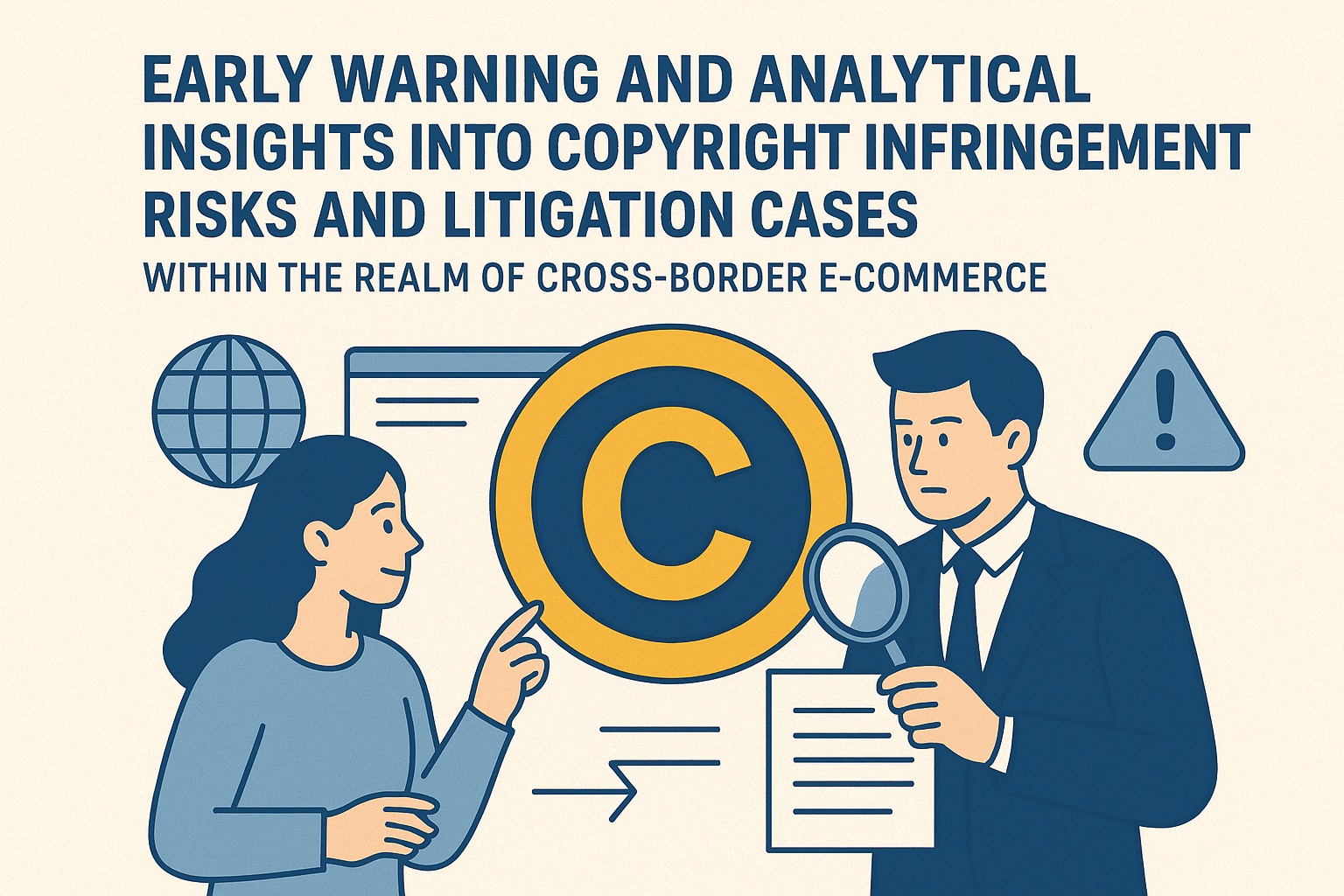Address
304 North Cardinal St.
Dorchester Center, MA 02124
Work Hours
Monday to Friday: 7AM - 7PM
Weekend: 10AM - 5PM

In the fast-paced world of cross-border e-commerce, protecting your intellectual property (IP) isn’t optional — it’s a strategic necessity. Strong IP protection safeguards your brand reputation, prevents costly legal battles, and ensures sustainable growth.
Amazon sellers and global e-commerce brands often face a tangled web of international copyright laws. A product design that’s legal in one country might trigger a lawsuit in another. Understanding how to spot early warning signs, assess infringement risks, and take proactive action can help you avoid financial and reputational damage.
This article explores what copyright infringement means in cross-border e-commerce, how to detect and prevent it early, and what real-world cases teach us about managing IP compliance effectively.
Copyright infringement happens when someone uses a protected work — such as a logo, image, design, or piece of software — without the creator’s permission.
In e-commerce, infringement often occurs when sellers list products that include unauthorized graphics, copy text from competitors’ listings, or replicate branded designs. Even unintentional misuse can result in Amazon listing removal, account suspension, or legal claims.
For example, a U.S.-based seller sourcing phone cases from an overseas supplier might unknowingly sell designs that copy Apple’s official patterns — triggering copyright complaints and enforcement.
Copyright laws differ from country to country. What’s permissible in China or India might be illegal in the EU or the U.S. Sellers must adapt to these differences when expanding globally.
Example: A fashion brand legally selling custom prints in the U.S. was sued in Germany because its supplier had reused a copyrighted textile pattern owned by a European designer.
Amazon now actively enforces Intellectual Property (IP) Policy standards. The platform’s AI-driven detection systems and Brand Registry reports flag potential violations quickly. A single infringement claim can remove listings or even trigger account deactivation.
As cross-border trade expands, copyright holders increasingly monitor marketplaces for infringement. Litigation is becoming more aggressive, and penalties are rising — not only in the U.S. but also across Europe and Asia.
Always verify that your suppliers provide legal proof of ownership or licensing for designs, logos, and technologies. If a factory can’t provide a trademark or copyright authorization letter, that’s a red flag.
Pro Tip: Before listing, run product images through reverse search tools (like Google Images or TinEye) to ensure they aren’t copied from another brand.
If your account begins receiving multiple complaints or Amazon takedown requests, it’s an early warning. These can come through Brand Registry or the Notice of Infringement system. Take each complaint seriously and investigate patterns — especially if similar products are targeted repeatedly.
If your supplier’s product looks identical to a popular branded item — same shape, color, or logo placement — it likely violates copyright or trade dress rights. Even small similarities can cause major issues.
Avoid licensing agreements with unclear rights. If it’s not explicit who owns the design or what you’re allowed to reproduce, assume there’s a risk until clarified by legal counsel.
For U.S.-based sellers, international enforcement can be unpredictable.
Example: A U.S. smartwatch seller lost a Chinese manufacturing partner to a local counterfeit operation. Without Chinese trademark registration, the seller couldn’t prevent factory-level infringement.
Copyright litigation can escalate quickly and expensively:
Case in Point: In 2023, several Amazon apparel sellers were fined after unknowingly selling shirts featuring copyrighted cartoon artwork. Despite sourcing from verified suppliers, their lack of documentation led to suspension and losses exceeding $100,000 collectively.
Schedule quarterly reviews of your listings, marketing materials, and supplier catalogs. Use automated IP monitoring tools like Red Points or BrandShield to identify duplicate images or text online.
Amazon’s Brand Registry gives sellers access to advanced protection tools — like automated brand infringement alerts and priority enforcement support. It’s one of the most effective ways to secure your listings against counterfeiters.
Work with suppliers who have clear proof of ownership and licensing rights. Always request compliance certificates, brand authorization letters, or copyright releases for each design you sell.
Keep an eye on updates from WIPO (World Intellectual Property Organization) and regional IP offices. Consulting an international IP attorney ensures that your compliance aligns with current laws in your key markets.
Prepare templates and evidence packages for responding to takedown requests. If a listing is wrongly flagged, respond promptly with documents proving ownership or authorization.
Example: A U.K.-based electronics seller reinstated 40 listings within 72 hours by presenting OEM licensing letters and time-stamped design files — proof that they were the original rights holder.
Copyright protection isn’t just a legal issue — it’s a business strategy. Brands that invest in IP education, compliance systems, and supplier audits build long-term trust and resilience.
Encourage your team to spot potential IP conflicts early. Integrate IP compliance checklists into product development and marketing processes. This proactive culture helps prevent infringement before it starts.
In cross-border e-commerce, copyright vigilance equals business survival. By identifying early warning signals, understanding international laws, and applying best practices, you can minimize risks and maintain a strong reputation.
Don’t wait for a legal notice to take action — build your IP defense today.
If you need expert help navigating international IP compliance or managing Amazon infringement disputes, contact our global e-commerce strategy team for a personalized consultation.
Q1. What is copyright infringement in e-commerce?
Copyright infringement occurs when copyrighted designs, logos, or other creative works are used without permission. On Amazon, this often leads to listing removal or account suspension.
Q2. How can I prevent copyright infringement on Amazon?
Register your brand with Amazon Brand Registry, verify supplier rights, and perform regular IP audits to ensure compliance.
Q3. What should I do if my account is suspended for infringement?
Gather proof of ownership or authorization, respond quickly to Amazon’s notice, and seek professional appeal support. The faster you act, the higher your chances of reinstatement.